[From the Scene] Polish pilots on transition from flying Soviet jets to S. Korea's FA-50
8 Polish pilots in S. Korea for FA-50 operation training as delivery of combat aircraft starts in August
By Ji Da-gyum
Published : June 21, 2023 - 15:38
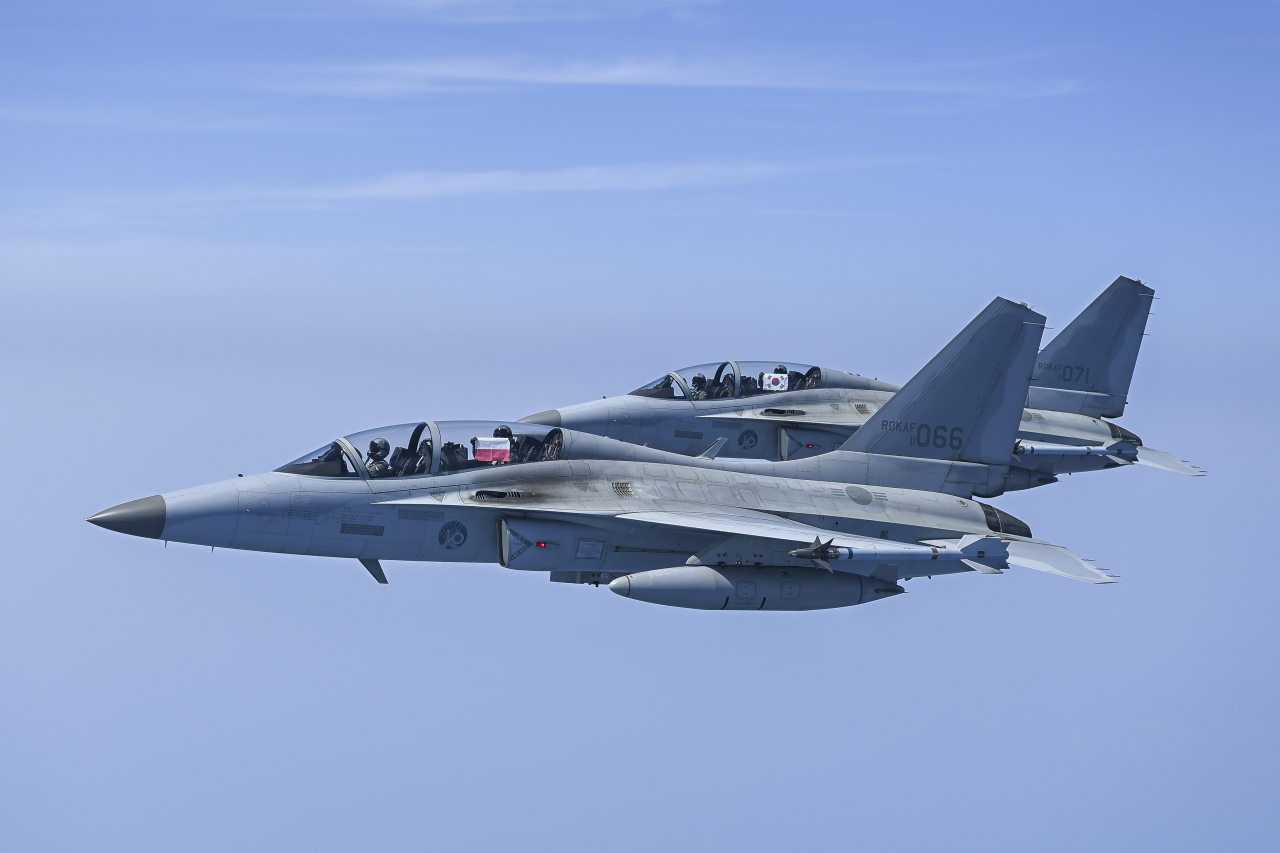
YECHEON, North Gyeongsang Province — A team of Polish pilots is bidding farewell to its Soviet-era MiG-29 fighter jets. They are instead transitioning to South Korea's FA-50 light combat aircraft, with training support and guidance from the South Korean Air Force.
Two groups, each comprising four Polish pilots, have undergone monthslong training in Korea. The primary aim of this training is to provide them with the essential skills and knowledge required to operate the FA-50 light combat aircraft, which will be delivered to Poland beginning in August.
The training holds paramount importance at a crucial juncture for Poland as it accelerates its military modernization efforts in response to the growing threats posed by Russia. South Korea's FA-50 aircraft will be utilized as replacements for Poland's MiG-29 fighter jets, which have been transferred to Ukraine — a country embroiled in the ongoing war with Russia.
"In one word, it's transition. Transition means we are here to transition from one type of aircraft to our final product, which will be the FA-50PL," said Maj. Jacek Stolarek of the Polish Air Force during an interview with several local media outlets on Monday.
Stolarek made the remarks at the South Korean Air Force's 16th Fighter Wing in Yecheon County, North Gyeongsang Province, when asked about the significant lessons the Polish pilots learned during the training.
"This training has focused on changing our behavior (and) muscle memory," he said.
In particular, three out of four Polish pilots, including Stolarek himself, in the first group have flown Soviet-made MiG-29 fighter jets as their primary aircraft.
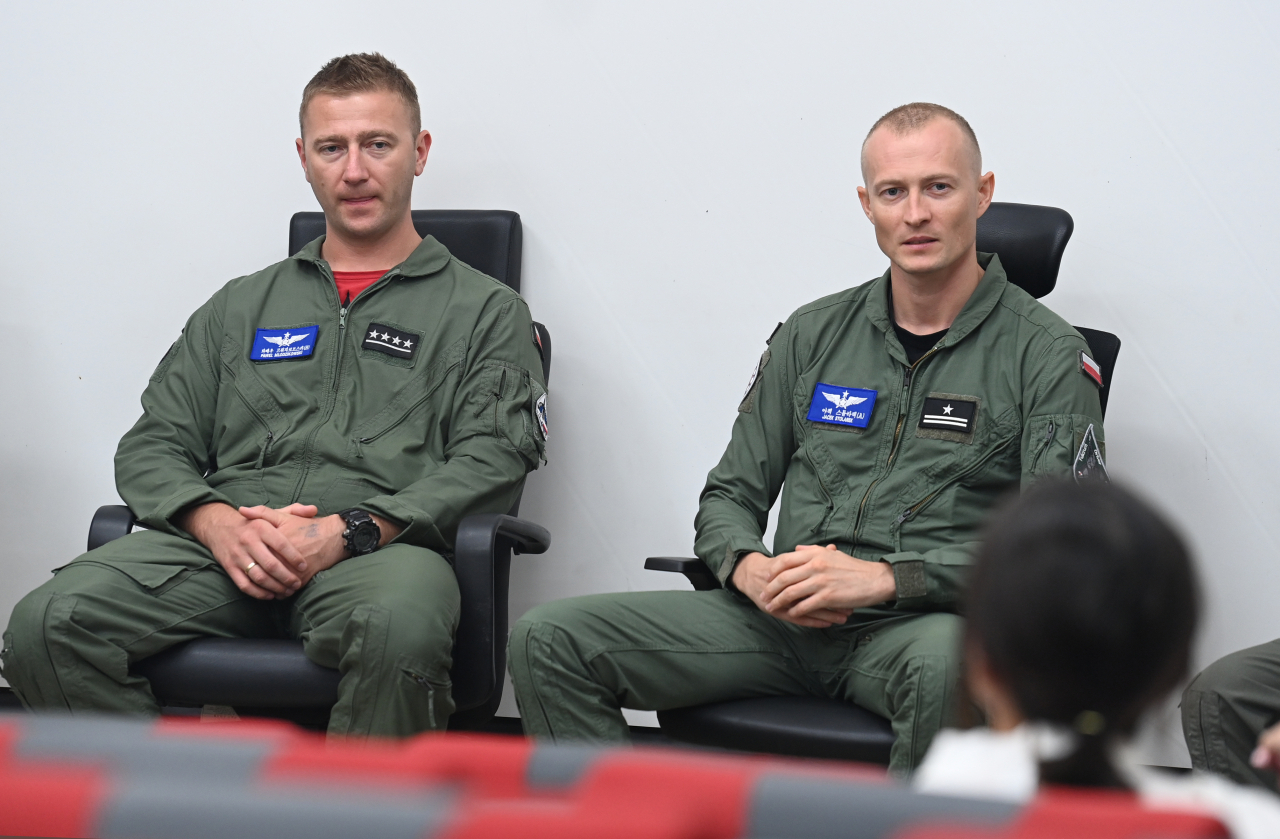
Capt. Yoon Pil-sang of the South Korean Air Force said he and other instructor pilots have been providing training to the Polish pilots with the "utmost consideration, aiming to facilitate their rapid adaptation to the different aircraft systems."
As the FA-50 has been developed with reference to the American F-16 fighter aircraft, Yoon said it would have been more challenging for Polish pilots to adapt due to the differences in aircraft systems.
"The MiG-29 aircraft are characterized by their substantial weight and decent thrust-to-weight ratio. However, their sustained turn rate is relatively low. Consequently, Polish pilots have developed a tendency to approach the battlefield environment while taking the characteristics into account," Yoon said.
"It took a while for Polish pilots to learn how to fight in environments where fighter aircraft like the FA-50 or F-16 series hold advantages. The pilots made a lot of effort to adapt and overcome these challenges."
Capt. Pawel Mlodzikowski also took note that the FA-50 is a single-engine light combat aircraft while the MiG-29 is a twin-engine, heavy fighter jet.
Mlodzikowski said that the most challenging aspect for him was learning to fly a fighter jet using "fly-by-wire" systems. But after completing around 10 or 15 flights, he has become accustomed to it. FBW systems are semi-automatic, computer-regulated flight control systems that replace traditional mechanical flight controls with an electronic interface.
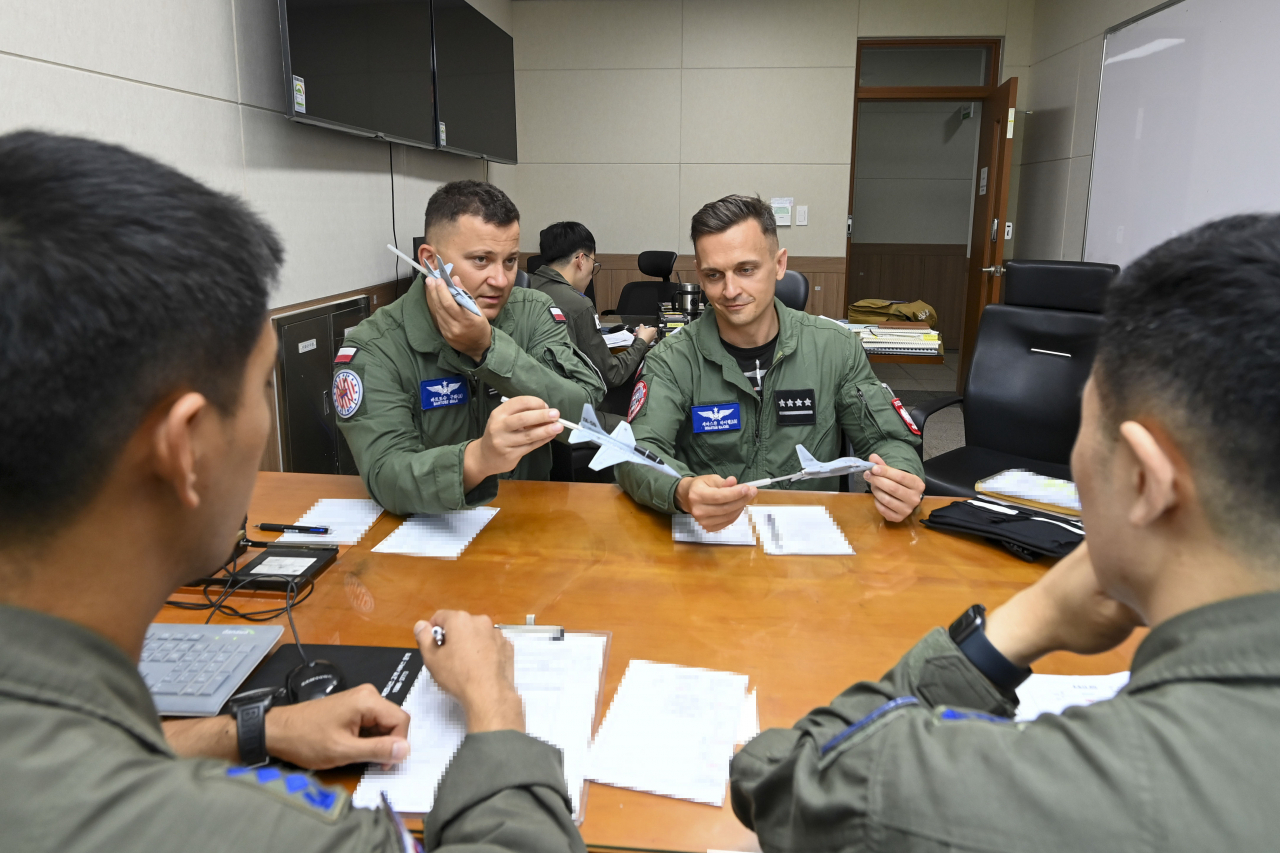
Monthslong, intensive course
The first group of four Polish pilots, each paired with a South Korean Air Force instructor pilot, completed an eight-week training program for the comprehensive operation of the FA-50, which included flight theory and aerial maneuvers.
Each pilot completed a total of 14 sorties with the T-50 jet trainers during the first-stage training, which took place from February to April at the South Korean Air Force's 1st Fighter Wing in Gwangju.
The T-50 is a variant primarily designed for flight operations, offering performance comparable to the FA-50 fighter aircraft. In contrast, the TA-50 serves as an intermediate version, positioned between the T-50 and FA-50, and is equipped with basic armaments.
Afterward, the pilots underwent an additional seven-week "lead-in fighter training" to enhance their tactical maneuvering skills, including air-to-air and air-to-ground combat. This training involved flying TA-50 lead-in fighter trainers at the 16th Fighter Wing in Yecheon from May to June.
Each pilot completed a total of 11 sorties in the TA-50 aircraft to acquire the necessary skills for combat missions, develop the pilots' proficiency in aircraft control and enhance their situational awareness in aerial combat scenarios.
"Each step is very important to achieve the main goal, so every flight hour is priceless," Stolarek said.
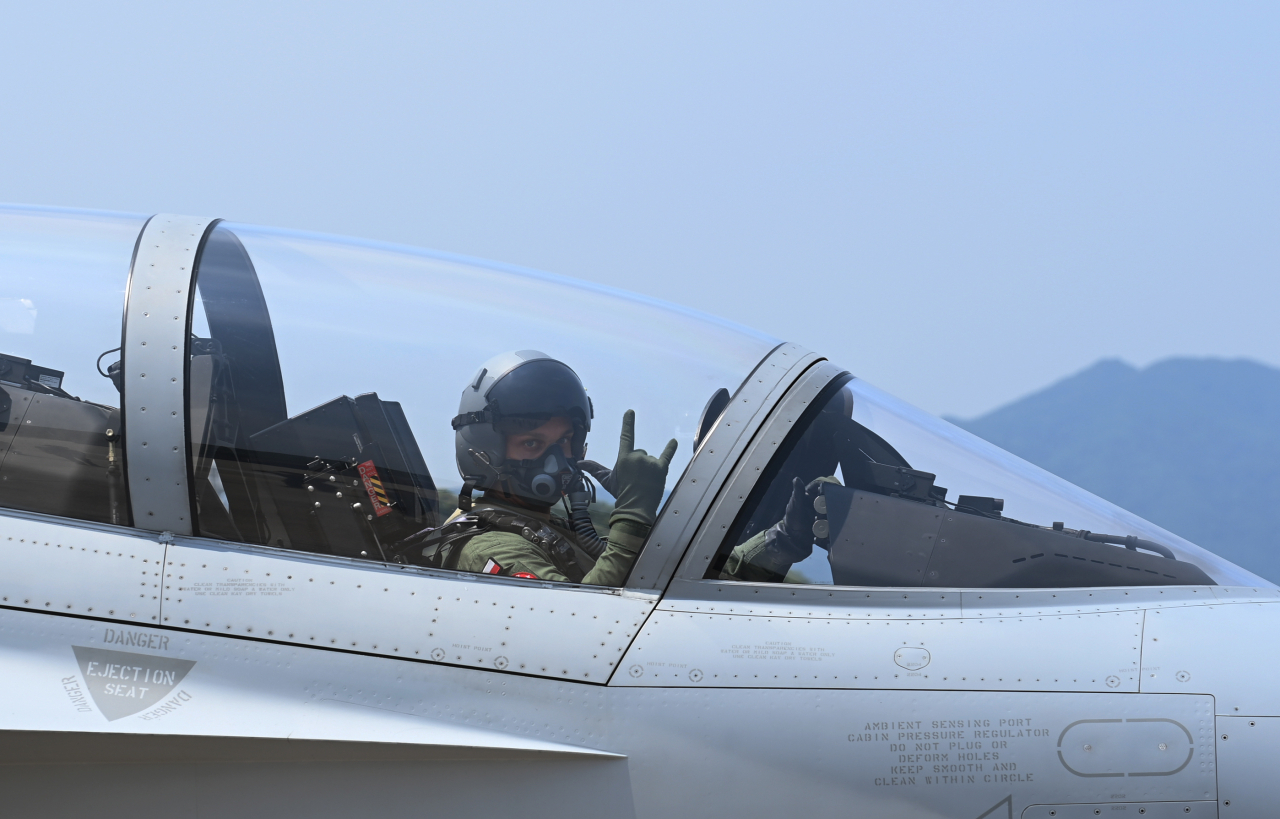
Every pilot also participated in eight simulator training sessions, during which they consistently practiced emergency situation drills.
During a simulator session on Monday, a scenario was created where the aircraft's electrical system was completely disabled, resulting in the loss of critical information for the pilots, such as the distance from the base or the aircraft's position. The training focused on effectively utilizing the aircraft's battery power and swiftly gathering available information to ensure a safe landing.
Furthermore, the pilots also engaged in bombing training exercises as part of their simulator training sessions.
New chapter, still long way to go
On Monday, the lead-in fighter training came to an end, concluding with a dynamic flight over the skies of Yecheon. Two TA-50 aircraft, with a Polish pilot in the front seat and a South Korean Air Force pilot in the rear seat, successfully landed after the mission.
"It was another stage of my pilot career," Capt. Sebastian Rajchel of the Polish Air Force told The Korea Herald after his final flight.
But Rajchel acknowledged that the training was even more challenging for him compared to his colleagues due to his previous experience flying Poland's turboprop PZL-130 as his primary aircraft. While jets have turbine engines enclosed with fan blades, turboprops feature an external propeller, making the transition demanding for Rajchel.
"My friends from the group were flying the MiG-29 back in Poland, but personally, I'm kind of an experiment because most of my background was (with) the PZL-130 ... It was extremely challenging for me to understand everything from the beginning within such a short, short amount of time," he said.
"I'm here and I finished the course. I think that I’ve proven that the pilots from the turboprop platforms can also perform very well."
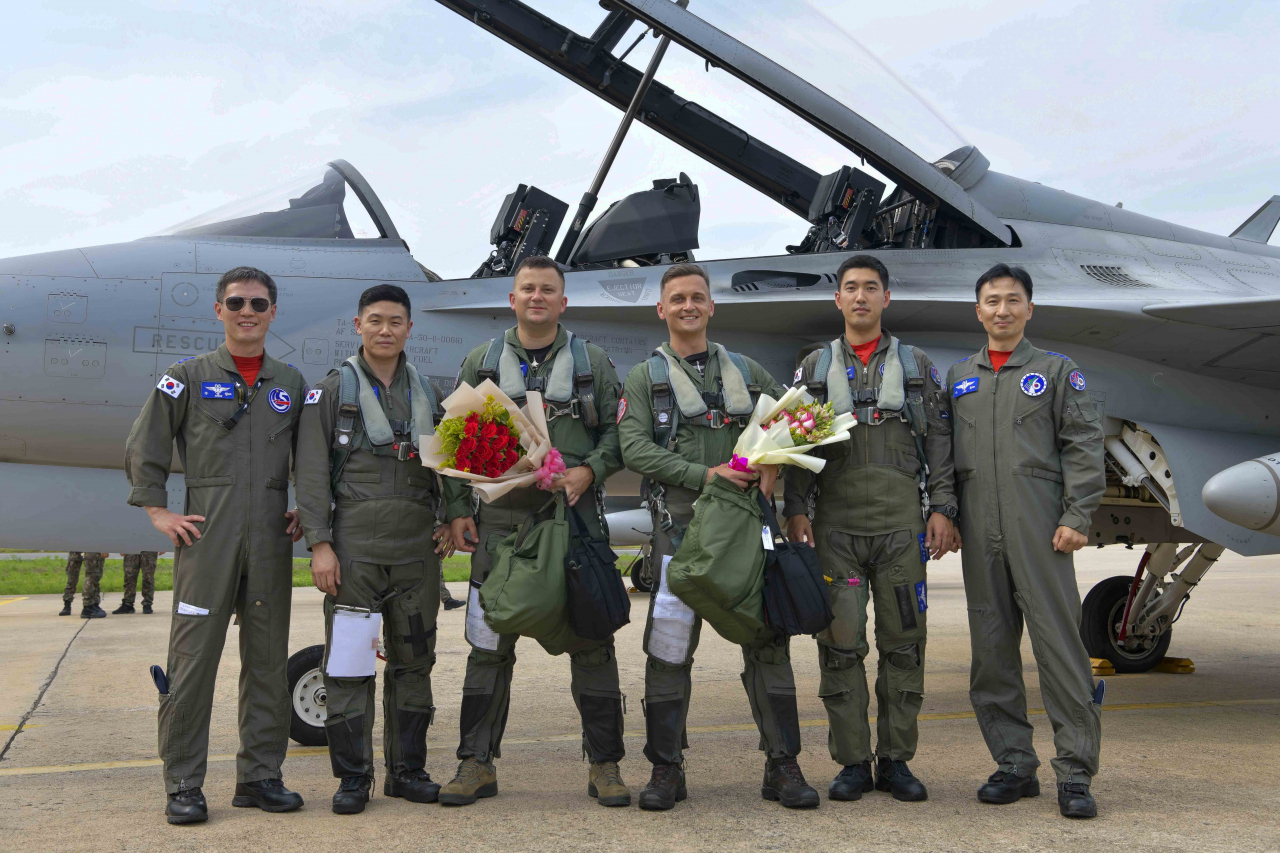
The first group of four Polish pilots will hold a completion ceremony for their lead-in fighter training on Thursday. Subsequently, the pilots will proceed to the Korea Aerospace Industries' headquarters, where they will undergo a one-week training session on the FA-50 simulator. After this, they will conclude their final ground-based flight proficiency training before returning to Poland in July.
Last September, KAI secured an export contract valued at approximately $3 billion, equivalent to around 3.9 trillion won, to deliver 48 FA-50 aircraft to Poland.
The initial delivery of 12 FA-50 aircraft is scheduled between August and the end of this year. The first batch, dubbed the "FA-50 Gap Filler," aims to replace the outdated fighter aircraft and address the gap in Poland's combat capabilities.
The rest of the 36 aircraft will be the FA-50PL variant, which will feature enhanced specifications specifically tailored to meet the unique requirements of the Polish Air Force. The delivery will commence in 2025 and continue until 2028.
Stolarek said the FA-50 aircraft will play a crucial role in the missions in Poland, such as air policing and quick reaction force, and carry out various tasks similar to those performed by F-16 or other aircraft. The advantage of the FA-50 is its cost-effectiveness, and the ability to accomplish certain tasks at a lower price, he added.
The pilots acknowledged that there is still a significant journey ahead to achieve their main goals, which include becoming instructor pilots to train other Polish pilots in operating the FA-50 and ensuring the full operational readiness of the FA-50 in the future.
"I would like to go back to Poland as soon as possible, because we have a lot of other tasks to do," Stolarek said.




















